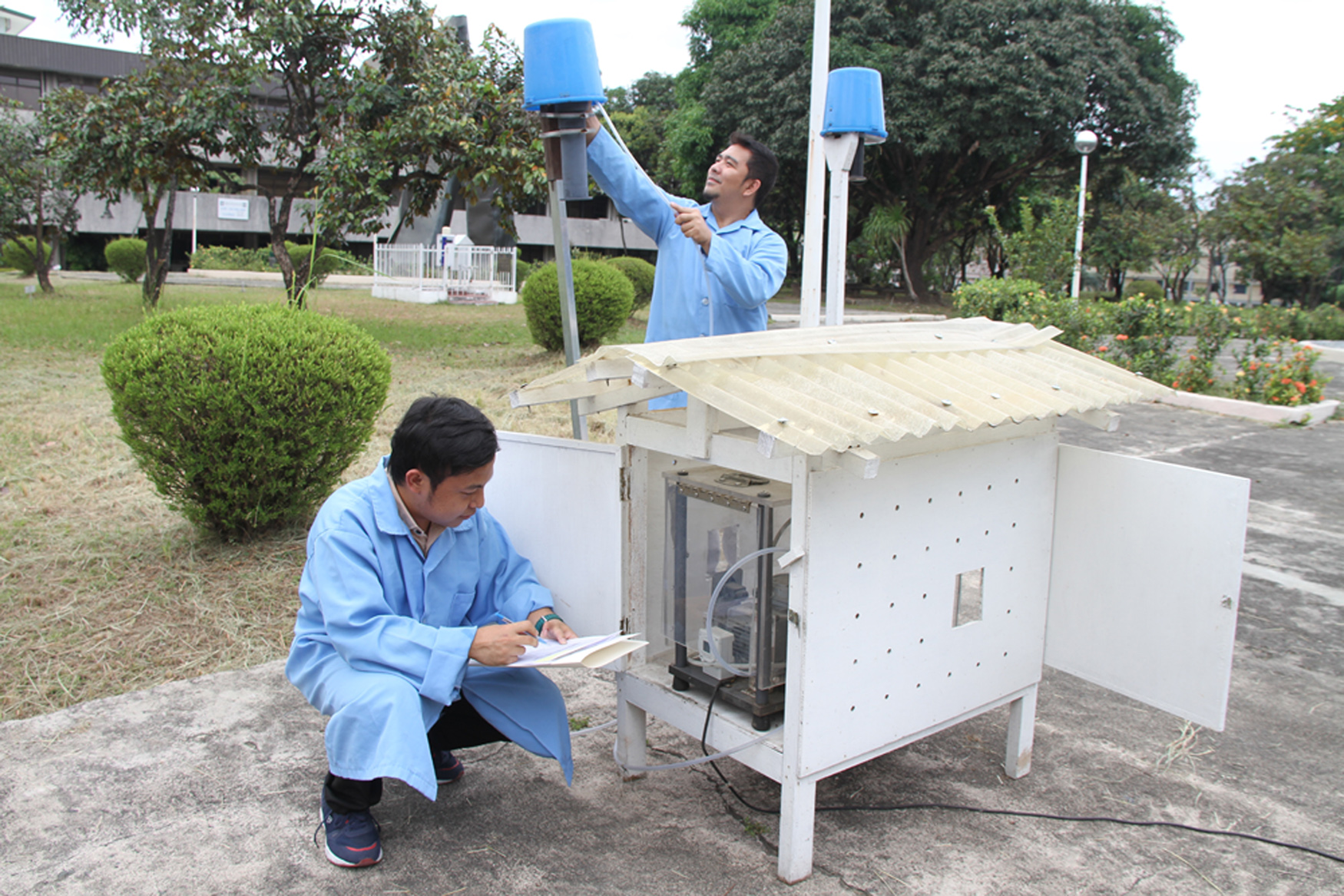
PNRI Gent Sampler set-up for air pollution monitoring
PNRI Conducts Air Pollution Studies with Nuclear Analytical Techniques
In the face of rising industrialization and pollution in urban areas, the Department of Science and Technology - Philippine Nuclear Research Institute (DOST-PNRI) takes advantage of the unique capabilities of nuclear analytical techniques for air pollution studies in Metro Manila and beyond.
Air pollution caused by particulates in the atmosphere is of great concern all over the world, as well as in the Philippines. When inhaled, fine particulates (matter smaller than 2.5 micrometers (μm) or PM2.5) can penetrate even deeper into the lungs and eventually into the bloodstream, which can cause heart and lung diseases, cancer and even death.
Black carbon, which forms much of the fine air particulate pollutants in Metro Manila, comes mostly from burning biomass and residential refuse, and compounded by emissions from vehicles and industrial establishments in urban areas. Alongside black carbon, lead particulates are another threat to public health, as the poisonous metal can damage the nervous systems of young children, leading to brain or blood disorders.
In a world beset by record–breaking temperatures and storms, air pollution is also a major contributor to global warming and the climate change phenomena feared across the globe. Aside from greenhouse gases such as carbon dioxide, black carbon is also among the culprits in gradually rising average temperatures.
But unlike greenhouse gases which stay in the atmosphere for up to 40 years, black carbon only lasts for several weeks to around a month or more. Reducing black carbon emissions will have an immediate effect on the overall composition of the atmosphere, helping to mitigate global warming.
Still, while most measurements can only identify how much particulate matter there is in the air, few are capable of classifying the pollutants in the air, let alone objectively able to trace their origins. The varieties of sources make it impossible to simply collect and weigh the air particulates and draw conclusions – and this is where nuclear applications come in.
As part of its studies on the application of nuclear and nuclear-related analytical techniques in multi-elemental data and analysis, PNRI engages in air pollution source identification and apportionment studies which aim to determine what the sources of pollution are, how much is the contribution of each pollutant and where these are coming from. PNRI’s Nuclear Analytical Techniques Application Section performs multi-elemental and non-destructive analysis of samples faster than conventional methods.
In cooperation with the Department of Environment and Natural Resources – Environmental Management Bureau (DENR-EMB) and the Australian Nuclear Science and Technology Organisation (ANSTO), PNRI used Gent Samplers to collect air particulates twice a week in five air polluton monitoring stations in Quezon City, Valenzuela, Mandaluyong, Pasig, and Bulacan.
To identify the sources of air pollutants and how much each contributes to the pollution, PNRI uses receptor modeling to trace the pollutants from the environment to the source. PNRI scientists are also able to trace the path of pollutants by analyzing wind direction for particulates carried into the air.
The latest results show that vehicle emissions comprise around half of the air pollutants in the metropolis, followed by industrial emissions, which form almost a third of the pollutants, and secondary sulfur, which is almost a quarter of all the air pollutants. The rest of the air pollutants are composed of smoke and fine soil.
Aside from generating basic data for air quality management, continuous air pollution monitoring is also helpful in documenting impact of government policies such as reducing lead levels coinciding with the phase-out of leaded-gasoline. Further studies will also be done to help formulate measures to mitigate the problem in areas with high levels of lead pollution.
“Addressing problems regarding traffic-related activities can greatly reduce our fine particulate pollution problems including the black carbon which can bring about better air quality in the area, resulting to a healthier air to breath by the general public and contributing to the mitigation of climate change,” said Dr. Preciosa Corazon Pabroa, project leader and head of the PNRI Nuclear Analytical Techniques Application Section.
PNRI’s air pollution studies are also being conducted in cooperation with local and international counterparts. In 2007, the Institute engaged in a technical cooperation project with the International Atomic Energy Agency in a joint effort with other countries in the Asia-Pacific region to build an Asia–Pacific Aerosol Database (A–PAD) for fine and coarse air pollutants.
The Institute also collaborates with the Partnership for Clean Air (PCA) for air pollution studies through a project with the European Union (EU) and the GFA Consulting Group. Through a new agreement with the PCA last June 2016, PNRI is planning to establish three new monitoring stations in Taguig, Makati and Valenzuela.
Learn more about PNRI's nuclear techniques for air pollution monitoring in this episode of DOSTv on April 3, 2017, featuring PNRI Nuclear Analytical Techniques Application Section Head Dr. Preciosa Corazon Pabroa.












































